As a gardener, few things are more satisfying than harvesting an abundance of cucumbers from your own backyard. But once you’ve enjoyed them fresh in salads, what else can you do with all those extra cucumbers? Don’t let any go to waste! This guide will provide you with over 15 creative ways to use up cucumbers from the garden
Enjoy Cucumbers Fresh
Of course. Eating cucumbers straight from the garden is the easiest thing to do. Here are some ways to enjoy them.
-
You can eat them plain or with salt, pepper, and your favorite herb, like dill or basil, sprinkled on top.
-
To make easy cucumber salads, just mix slices of cucumber with vinegar, olive oil, and chopped herbs. Add tomatoes, onion, or avocado for extra flavor.
-
Blend cucumbers into cold soups like gazpacho or cucumber yogurt soup. Their high water content makes them perfect for chilled summer soups.
-
Juice or blend into smoothies – cucumber adds a refreshing, hydrating element.
-
Use thick slices as vehicles for dips, spreads, and sandwiches fillings. Cream cheese, hummus, tuna salad, and nut butters all taste great with fresh cucumber.
-
Add sliced cucumbers to pitchers of water or alcoholic drinks like Pimms Cup to make them taste better.
Pickle Cucumbers
Pickling is one of the most classic ways to preserve abundant cucumbers. You can pickle cucumbers in vinegar brines or ferment them to make sour dill pickles, bread-and-butter pickles, relishes, and more. Some pickle options:
-
Quick refrigerator pickles – no canning required. Mix cucumbers with vinegar, salt, and spices and store in the fridge.
-
Fermented pickles like dill pickles. Requires just water, salt, and spices. The good bacteria ferments the cucumbers.
-
Bread and butter pickles – sweet, tangy and spiced. Perfect on sandwiches.
-
Relishes – chop cucumbers fine and mix with vinegar, sugar, and spices.
-
Fruit pickles – add sliced onion and bell pepper along with fruit like peaches or watermelon. Sweet and spicy.
Get Creative with Condiments
Cucumbers also shine when used to make condiments like salsas, dips, spreads, and dressings:
-
Pico de gallo – add diced cucumber to this fresh tomato salsa.
-
Tzatziki – a Greek yogurt and cucumber dip. Season with garlic, lemon, and dill.
-
Raita – an Indian yogurt and cucumber condiment, spiced with cumin.
-
Sandwich spreads – blend cucumber with cream cheese, herbs, and lemon.
-
Green goddess dressing – puree cucumber, herbs, garlic, and olive oil. Toss with salads.
-
Cucumber mayo – for an unexpected twist on classic mayo, blend in chopped cucumber.
Bake and Grill Cucumbers
Though we don’t often think to cook cucumbers, roasting or grilling brings out delicious new flavors. Ways to cook cucumbers:
-
Cucumber fries – toss in oil, spread on a baking sheet, and roast until browned.
-
Grilled cucumber – brush slices with olive oil and grill until softened with nice grill marks.
-
Stuffed baked cucumber – hollow out large cukes and stuff with meat, grains, or cheese mixes.
-
Cucumber casserole– layer sliced cukes, cheese, breadcrumbs, and bake.
-
Cucumber lasagna – use thin cucumber slices instead of lasagna noodles.
Sneak into Soups
Don’t forget about adding cucumbers to chilled or hot soups. Their moisture makes them perfect for:
-
Gazpacho – classic cold tomato soup with blended cucumber.
-
Cucumber vichyssoise – a cold soup with cucumber, potato, and leeks.
-
Thai cucumber soup – spicy and cooling, with coconut milk, chilies, and lime.
-
Cucumber melon soup – a sweet chilled soup with cucumber and melon. Garnish with mint.
-
Hot and sour soup – julienned cucumbers add crunch to the Asian classic.
Mix into Main Dishes
In addition to salads, cucumbers can be mixed into full main course dishes for moisture and crunch:
-
Cucumber sushi rolls – wraps with rice, veggies, fish, or other fillings.
-
Cucumber noodles – use a spiralizer to cut cucumbers into healthy, low-carb “noodles”. Toss with Asian flavors.
-
Cucumber wraps – wrap spiced meats, falafel, or veggie mixes in thin cucumber slices.
-
Cucumber sandwiches – dainty tea sandwiches with cucumber, cream cheese, smoked salmon, or cucumber.
-
Cucumber pizza crust – use thick slices as the low-carb “crust” for creative individual pizzas.
Blend into Drinks
Cucumber’s high water content makes it perfect for infusing into thirst-quenching drinks:
-
Cucumber water – infuse pitchers of water by adding sliced cucumbers and herbs like mint, basil, or lemon.
-
Cucumber lemonade – add pureed cucumber to homemade or store-bought lemonade.
-
Cucumber mojitos – muddle cucumber slices and mint leaves, mix with rum, soda, and lime.
-
Cucumber margaritas – blend cucumber with tequila, lime juice and simple syrup.
-
Cucumber martinis – shake vodka with muddled cucumber and dry vermouth or elderflower liqueur.
Transform into Desserts
Believe it or not, cucumbers can even be used to make refreshing sweet treats! Try adding them to:
-
Cucumber sorbet – blend pureed cucumbers with simple syrup and lemon juice, then freeze.
-
Cucumber cupcakes – add shredded cucumber to cupcake batter and frosting.
-
Cucumber granita – freeze pureed cucumber juice into crunchy, sweet ice crystals.
-
Cucumber cookies – add shredded cucumber to sugar cookie dough.
-
Cucumber panna cotta – infuse cream with cucumber before turning into silky panna cotta.
With all these creative ways to use cucumbers, you’ll enjoy your backyard bounty all season long. Don’t let any precious cucumbers go to waste – turn them into pickles, salsa, soups, main dishes, drinks and even desserts!
Pickle Making Tips & Tricks
- If you have extra brine, you can put it in a jar after letting it cool down until you’re ready to make more pickles. I like to make a lot of pickles at once and store them in the fridge so I can make them whenever the harvest calls for it!
- Always make enough brine for each batch of pickles. DO NOT just add water to the jars if you run out of brine. This will change how acidic your pickles are, which means they are no longer safe to eat.
- You can also make “quick pickles” with sliced cucumbers and the brine that you have left over. After slicing the cucumbers and putting them in the brine, let them sit in the fridge overnight. The flavor will keep getting better and is at its best after about two weeks.
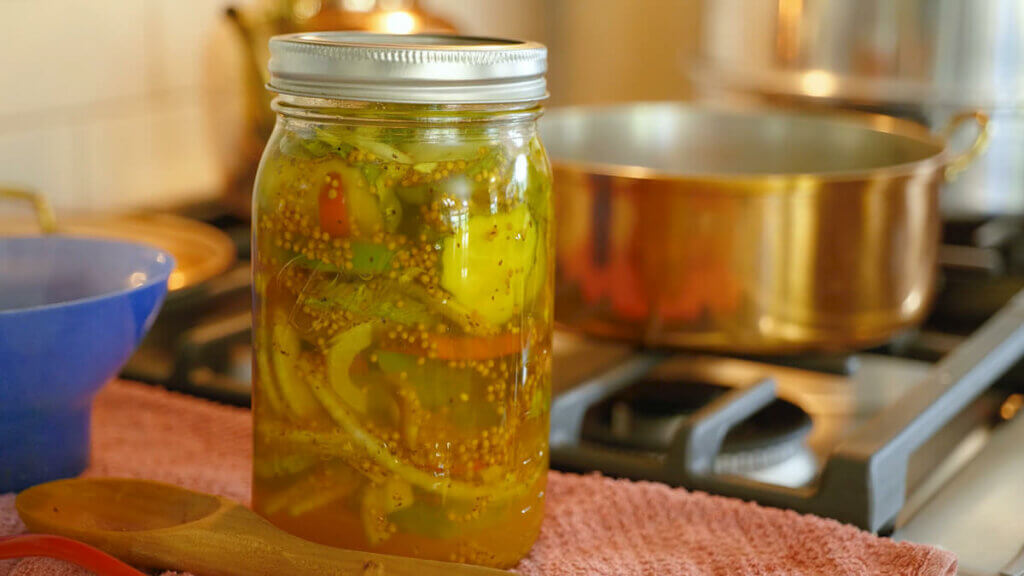
Tips for the Best Pickles (That Stay Crunchy)
There are a few tips to remember when making this homemade garlic dill pickles recipe, especially if you want to avoid soggy pickles!.
In fact, I have an entire post on seven tips for the crunchiest pickles. If this is your first time making pickles, I highly recommend reading that post for more tips.
When making pickles, its important to…
- Pick cucumbers in the morning. Cucumbers will be their firmest in the early morning. If possible, don’t pick cucumbers in the afternoon, when they have the least water.
- Pick cucumbers when theyre ripe. If your cucumbers get too big, they might taste bad or turn bitter. Cucumbers should be picked when they are light to dark green and still have their sharp spines. When a cucumber loses its spines, turns pale yellow, and gets swollen, it’s too ripe.
- Use a good pickling variety of cucumbers. There are a lot of different kinds of cucumbers that you can grow in your garden, but not all of them are good for pickling. Choose a variety thats known for pickling.
- Preserve them as soon as possible after harvesting. Cucumbers get soft if you pick them and leave them at room temperature. Cucumbers will never get firm again once they’ve become soft. So put them in salt and ice water in the fridge right away or right away if you don’t have enough to warrant canning a batch.
- Remove the blossom end. The blossom end contains enzymes that can cause soggy pickles. See the video for an example. If you already have the stem and blossom off and aren’t sure which end is the blossom end, look for the end that is lighter green.
- Use an ice water/salt-water bath prior to canning. The ice water and salt help keep the pickles firm. In fact, the salt will help the cucumber lose its extra water, which will make the pickle crispier. Soak cucumbers in water for up to three days in the fridge. As you pick more, add it to the water bath. Allow them to soak for a minimum of 12 hours.
- Can cucumbers whole. I enjoy a good pickle spear or sliced pickle, but I’ve found that my pickles stay crisper when I can them whole. To get pickle spears or slices, I’ll just cut it up when I eat it.
- Adding tannins will also help keep the pickles crunchy while they’re being canned. You can get tannins from either black tea leaves or grape leaves, which are listed below under “ingredients needed.”
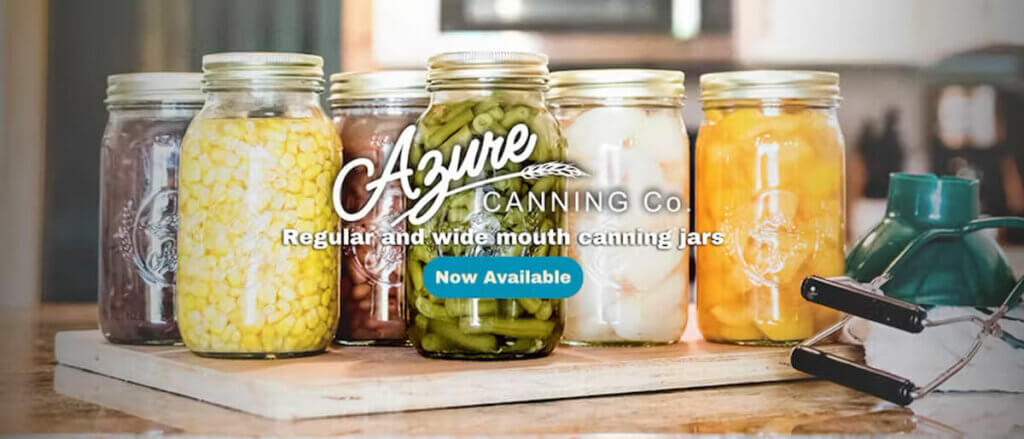
- Jars for canning Their new canning line, “Azure Canning Co.,” came out in 2023, and they sell both regular and wide-mouth canning jars. Wide-mouth canning jars are better for pickles because they are easier to put in and take out of the jar. But, as this post shows, regular canning jars with a mouth also work. This post was sponsored by Azure Standard! Right now, you can get 10% off your first Azure Standard order of $50 or more by using the coupon code 20%E2%80%9CMelissa10%E2%80%9D at checkout.
- Water Bath or Steam Canner? I love my steam canner so much that I use it instead of my water bath canner for all of my water bath canning recipes. But use what you have and what youre comfortable with.
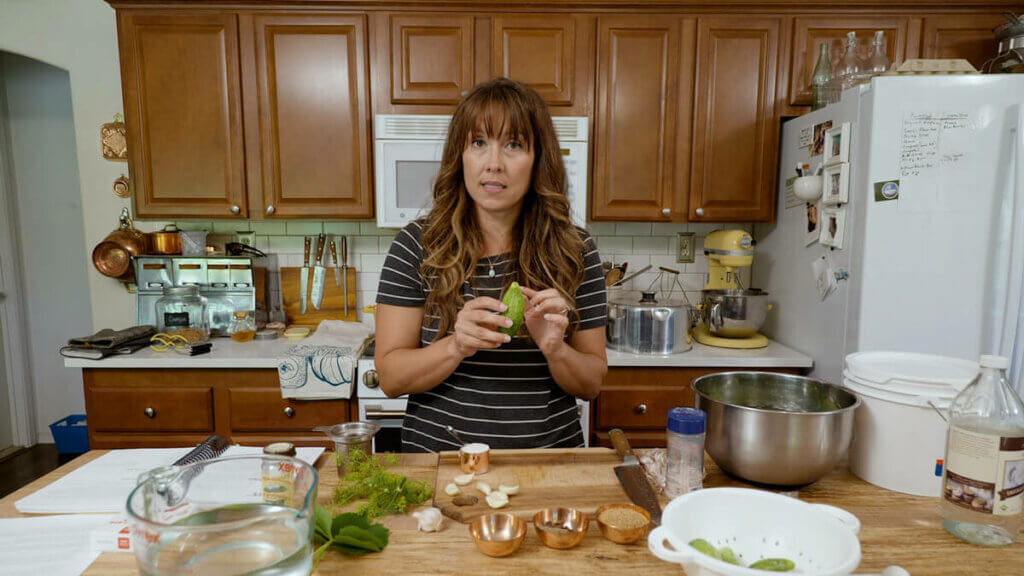
- Apple cider vinegar: Make sure the vinegar you’re using is at least 5% acidic. Some of the vinegar in grocery stores is only 4%, which is not safe for canning. Botulism can’t live in an acidic environment, so we need to make sure that the recipes we use to can food are safe and approved. I buy my organic (non-GMO) white vinegar from Azure Standard. White vinegar will keep the brine clear and give you that classic dill pickle taste. Any vinegar can be used, but apple cider vinegar tastes great to some.
- Water—A canning recipe that doesn’t call for at least equal parts of water and vinegar is probably an old one.
- When I use salt on the homestead, I always use Redmonds Real Salt (use coupon code Pioneering to get 15% off your order at checkout). There may be a pinkish-red substance at the bottom of your pickle jars. This is normal and won’t hurt you. You can also use kosher salt or pickling salt.
- Sugar – Sugar is optional. A lot of people like to add a little sugar to pickles to make them less juicy. But it’s not needed for canning safety, so you can leave it out if you want to.
- Pickling Spices—The pickling spices will add a lot of flavor. There is no “right” or “wrong” pickling spice, but the one I love most is the one I make myself with whole allspice, whole peppercorns, and celery seed (recipe below). Tip: Instead of straining the brine, put your pickling spices in a tea infuser.
- Garlic: I like to use two smashed garlic cloves per quart jar and one clove per pint jar. Feel free to change this ratio to your liking (I’m going to add a few more garlic cloves, right?).
- Whole Mustard Seed: I put two teaspoons in a quart and one teaspoon in a pint. Again, adjust to your liking.
- Grape Leaves (or Black Tea)—The tannins in grape leaves, black tea, oak leaves, or horseradish leaves will help the pickles stay crunchy. Some people use bay leaves, but they might be different in taste. Use one leaf per jar or 4 teaspoons of loose black tea leaves (strain before putting in jars).
- Dill: For this recipe, you can use fresh dill sprigs, dried dill seeds, or chopped fresh dill weed. Two or three fresh dill heads per quart jar is what I like to use. Add 2 tablespoons per quart jar of chopped fresh dill weed or dried dill seed. Use 1 tablespoon per pint jar.
- Cucumbers: Make sure you use a good type of cucumber for pickling. Regular or Persian cucumbers work well. Also, make sure your cucumber is firm. A soggy pickle will not get firm no matter how many times you put it in ice water or can it. So starting with good firm cucumbers is key.
- You can add 1/4 teaspoon of red pepper flakes to each jar of homemade garlic dill pickles if you like your pickles with a bit of a kick.
No pickling spice, no problem! Simply combine the following ingredients, and youll have your own homemade pickling spice anytime you need it:
- 1 Tablespoon Celery Seed
- ½ Tablespoon Whole Black Peppercorns
- ½ Tablespoon Allspice
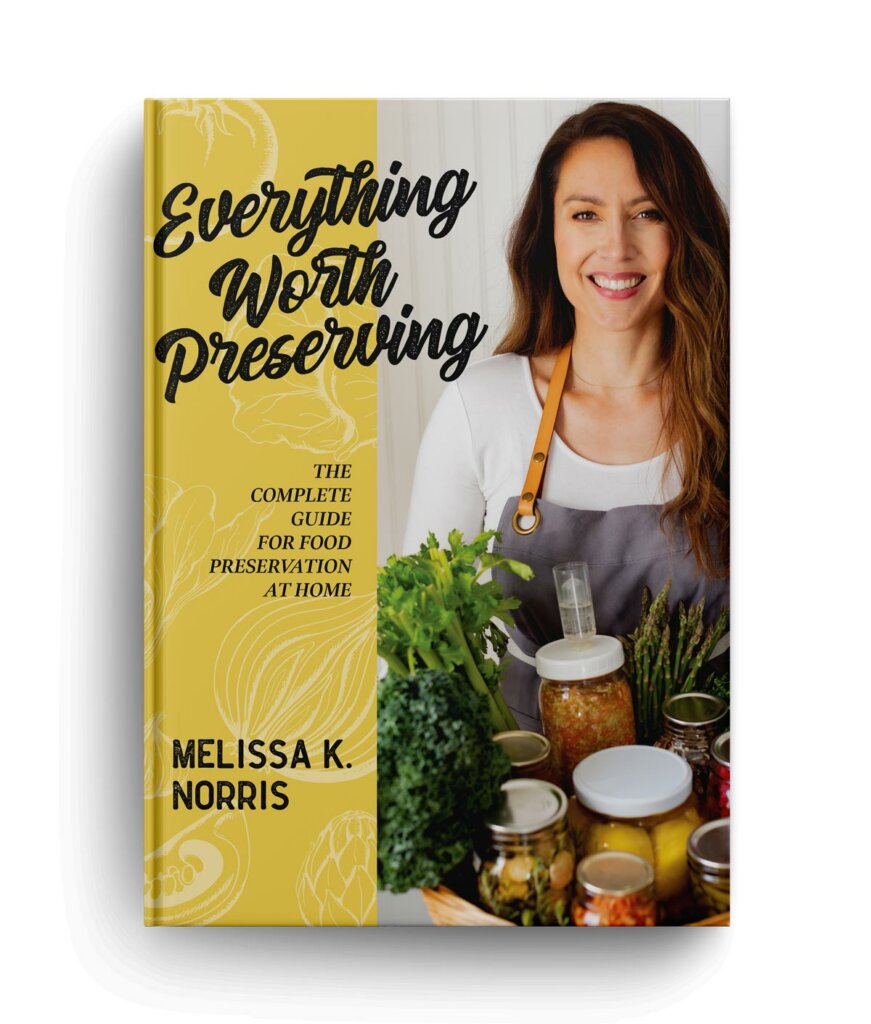
This homemade garlic dill pickles recipe can be found on page 206 of my cookbook Everything Worth Preserving.

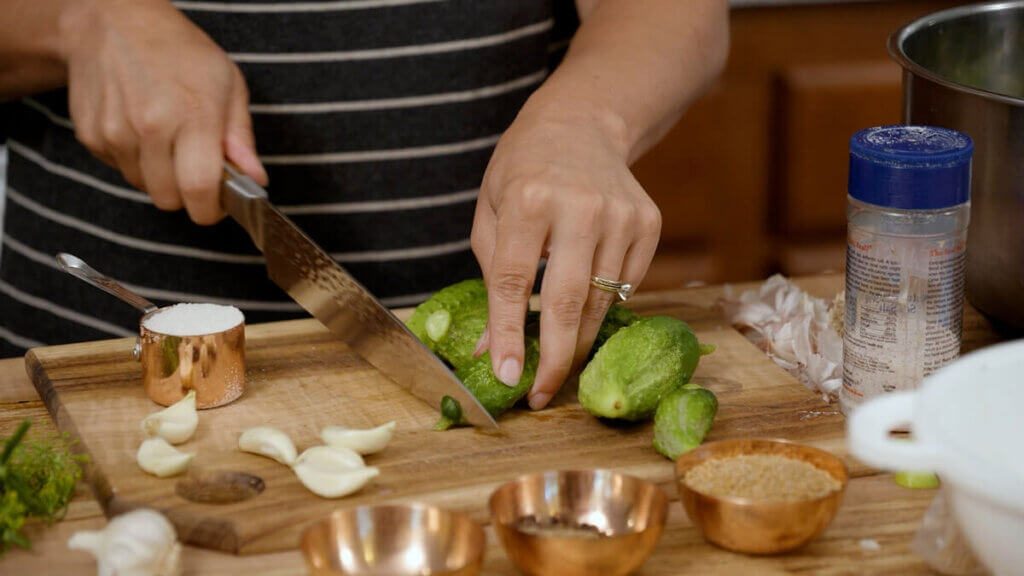
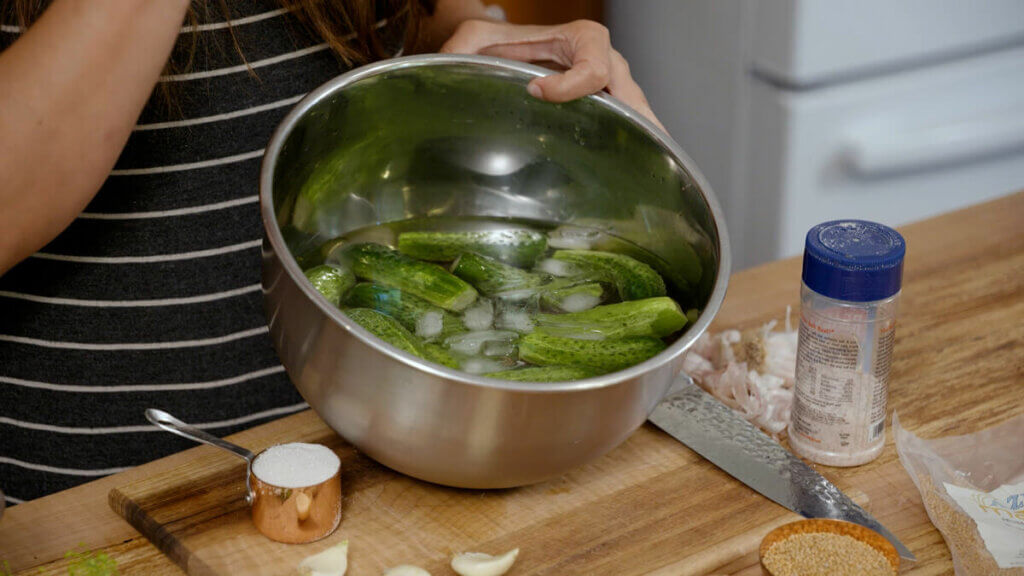
3 Tips For Growing Cucumbers
FAQ
What to make with lots of cucumber?
Cucumber recipesSichuan smacked cucumber noodles. Cucumber soup. Pickled radish & cucumber salad. Green goddess avocado salad. Crunchy cucumber salad. Lemongrass & lime pork meatballs with pickled veg. Peanut & herb noodle salad. App onlyTurmeric spiced chicken, pickled cucumber & crispy rice bowls with chilli peanut sauce.
What can I do with cucumbers besides make pickles?
Besides pickling, cucumbers can be used in a variety of ways. They can be sliced for sandwiches, diced into salads, or paired with dips like hummus or ranch. Cucumbers can also be blended into refreshing beverages like cucumber limeade or infused water.
